Cullowhee, North Carolina
Cullowhee /ˈkʌləhwiː/[3] is a census-designated place (CDP) in Jackson County, North Carolina, United States. The population was 6,228 as of the 2010 census.[4] The community is the home of Western Carolina University, part of the UNC System. The Jackson County Airport is located just outside the CDP limits.
Cullowhee, North Carolina | |
|---|---|
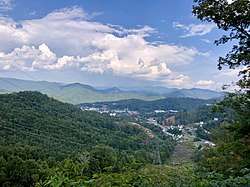 Cullowhee, the Valley of the Lilies | |
Location of Cullowhee, North Carolina | |
| Coordinates: 35°18′35″N 83°11′1″W | |
| Country | United States |
| State | North Carolina |
| County | Jackson |
| Area | |
| • Total | 3.51 sq mi (9.08 km2) |
| • Land | 3.51 sq mi (9.08 km2) |
| • Water | 0.0 sq mi (0.0 km2) |
| Elevation | 2,116 ft (645 m) |
| Population (2010) | |
| • Total | 6,228 |
| • Density | 1,777/sq mi (686.2/km2) |
| Time zone | UTC-5 (Eastern (EST)) |
| • Summer (DST) | UTC-4 (EDT) |
| ZIP code | 28723 |
| Area code(s) | 828 |
| FIPS code | 37-15880[1] |
| GNIS feature ID | 1019881[2] |
The name of the town was long thought to mean "Valley of the Lillies", but is actually derived from part of the Cherokee phrase joolth-cullah-wee, which translates as "Judacullah's Place".[5] Judacullah, a giant warrior and hunter who the Cherokee believe lived in the area, is an important figure in their religion and culture.
Geography
Cullowhee is located in central Jackson County at 35°18′35″N 83°11′01″W,[6] in the valley of the Tuckasegee River. North Carolina Highway 107 runs through the community, leading north 6 miles (10 km) to Sylva, the Jackson county seat, and southeast 7 miles (11 km) to Tuckasegee.
According to the United States Census Bureau, the Cullowhee CDP has a total area of 3.5 square miles (9.1 km2), all land.[4]
Climate
Cullowhee typically has a rather mild winter season. In the summer, high temperatures can reach into the 90 °F (32 °C)s.
History
Nestled along a mountain river and in a valley along a creek, Cullowhee was originally a Cherokee village that may have been established as early as 3000 BCE.[7] When European settlers moved into the area, Cullowhee became one of the first settlements in Jackson County and reportedly had the first school in the area, a one-room school in 1830. The area was largely farmland, which was cleared in the 1800s. Today many farms are now wooded or have homes built on them, or college buildings. In 1883, Painter Post Office was founded by Rolling A. Painter, and located in his store. This led to the further development of the Old Cullowhee Road area into a business district. The post office was renamed "Cullowhee" in 1908, taking over from another post office in the vicinity of Forest Hills. In 1889, Cullowhee High School was founded by Robert Lee Madison, today's Western Carolina University.
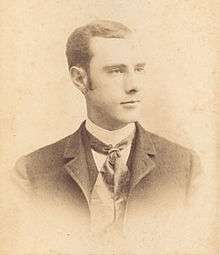
The institution ceased to be named a high school when the first brick graded school opened in 1923 with grades 1-11, now the site of the former Brown Cafeteria Building. In 1940, a massive flood caused severe damage to the business district, wiping away almost all the buildings on the side of the river opposite Western Carolina University, the north side of the river. The buildings on the opposite side of the river survived, though waterlogged. The flood crested at 21 feet (6.4 m) above Cullowhee Dam, the highest on record. Today such a flood would be impossible due to the dams built since the flood on the East and West forks of the Tuckasegee River. When the area rebuilt, the buildings clung to the higher ground around Old Cullowhee Road and the area closer to the river was abandoned. Many of these newer buildings are today in poor shape. The area underwent massive growth starting in the 1960s and continuing through today and it will continue into the future with plans for a new University Town Center, Old Cullowhee Road revitalization, and many new homes being built or planned for the area. The oldest surviving structure in the area is St. David's in the Valley church, dating back to 1880.[8]
The town has had a public school since 1923, which has moved through four different buildings over the years. Cullowhee Valley School is the latest incarnation of this school. Before Cullowhee Valley, the public school was in Cordelia Camp Laboratory School from 1964 until 1994, McKee Training School from 1939 until 1964, and Cullowhee Training School from 1923 until 1939. The two former buildings still stand on the university campus, but the latter was demolished in the 1950s.
The downtown of Cullowhee was destroyed in the flood of 1940. Nothing was ever built to replace it.
The Joyner Building and Judaculla Rock are listed on the National Register of Historic Places.[9][10]
A Walton Family Foundation report named the Cullowhee micropolitan area (Jackson County) number 13 in the United States. Reasons included the area's status as a tourist destination and " superior job growth, wage increases and young businesses".[11]
Demographics
As of the census[1] of 2010, there were 6,228 people. As of the 2000 census, there were 716 households, and 272 families residing in the CDP. The population density was 983.1 people per square mile (379.6/km2). There were 823 housing units at an average density of 226.1/sq mi (87.3/km2). The racial makeup of the CDP was 88.91% White, 7.24% African American, 0.95% Native American, 1.34% Asian, 0.08% Pacific Islander, 0.53% from other races, and 0.95% from two or more races. Hispanic or Latino of any race were 1.31% of the population.
There were 716 households, of which 17.5% had children under the age of 18 living with them, 28.1% were married couples living together, 7.3% had a female householder with no husband present, and 61.9% were non-families. 35.9% of all households were made up of individuals, and 5.0% had someone living alone who was 65 years of age or older. The average household size was 2.01 and the average family size was 2.72.
In the CDP, the population was spread out, with 5.9% under the age of 18, 72.8% from 18 to 24, 11.0% from 25 to 44, 7.0% from 45 to 64, and 3.2% who were 65 years of age or older. The median age was 21 years. Both the overall age distribution and the median age are driven by the presence of Western Carolina University. For every 100 females age 18 and over, there were 84.4 males
The median income for a household in the CDP was $19,688, and the median income for a family was $36,538. However, poverty statistics that are based on surveys of the entire population can be misleading in communities dominated by students, such as Cullowhee. Males had a median income of $26,161 versus $16,607 for females. The per capita income for the CDP was $10,017. About 25.2% of families and 41.5% of the population were below the poverty line, including 37.3% of those under age 18 and 9.6% of those age 65 or over.
Education
Western Carolina University is a constituent campus of the University of North Carolina system. WCU is the fifth oldest institution in the UNC system.[12] It was founded in 1889 with a few hundred students in a small, one story wood building and has grown to have over 11,500 [13] students with approximately 220 majors and concentrations for undergraduates, and more than 45 graduate-level programs of study. The campus covers approximately 600 acres (240 ha) and takes up much of the Cullowhee Valley.
There is one public Kindergarten-through-8th Grade School, Cullowhee Valley School, which was opened in 1994 and replaced a 30-year-old structure on the University's Campus. High School Students have had to attend Smoky Mountain High School in nearby Sylva since Cullowhee High School closed in 1988.[14]
Plans
Forest Hills, an incorporated village just south of Cullowhee, has had a proposal placed before it to become the town/city of Cullowhee, incorporating areas along Old Cullowhee Road and NC 107. The area around Old Cullowhee Road would then become a large traditional downtown area with mixed use buildings, a city hall, homes, walkable neighborhoods, supermarket, and trails/parks along the river and throughout the area. The Elementary School could even be relocated here, as well as the Post Office and other town/city functions. A "town center" to be constructed on some 35 acres (14 ha) owned by WCU is one area targeted for annexation and development as well. The plan is controversial, as it may attract business away from Old Cullowhee Road and wouldn't allow local small businesses, only chain stores and businesses. The "town center" could accommodate as much as 270,000 square feet (25,000 m2) of commercial, housing and multi-tenant office space, with parking for 871 vehicles including a 320-space parking garage on 22 acres of land owned by the university, currently home to the Cordelia Camp Outreach Center (Old Cordelia Camp Laboratory School, built in 1964), the intramural fields, and several parking lots. The annexation will also include the area that is the business district on Old Cullowhee Road (S.R. 1002) near the former campus entrance.
The Old Cullowhee Road area has declined since it was bypassed by the relocation of N.C. 107 in the late 1970s-early 1980s; CuRvE's formation grew from a desire to rejuvenate the once-thriving commerce center. The CuRvE (Cullowhee Revitalization Endeavor) organization wants to make Cullowhee "a unique and highly attractive area – a mix of residences and businesses along rivers and streams". CuRvE's vision is more supported by the community than the Western Carolina University "town center" vision, as CuRvE would allow small businesses, while the "town center" would not, and the Old Cullowhee Road area is along a mountain river, and many agree the site is more beautiful than the Cordelia Camp/"town center" site.[15]
Gallery
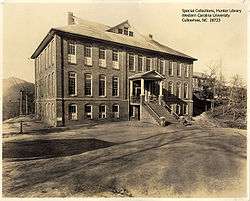 The Joyner Building was the main Western Carolina University building from 1916 until 1939.
The Joyner Building was the main Western Carolina University building from 1916 until 1939. St. David's-in-The-Valley Church (1886)
St. David's-in-The-Valley Church (1886).jpg) Former McKee Training School (1939)
Former McKee Training School (1939).jpg) Cullowhee Baptist Church
Cullowhee Baptist Church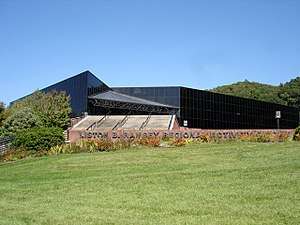 The Ramsey Center hosts many local events, as well as many of the major Western Carolina University sports programs.
The Ramsey Center hosts many local events, as well as many of the major Western Carolina University sports programs. Western Carolina University in 2007, before work on the Quad, new dormitories, and Courtyard Cafeteria started
Western Carolina University in 2007, before work on the Quad, new dormitories, and Courtyard Cafeteria started- Cullowhee Valley K-8 School, located along NC 107
 Cullowhee as seen from the Jackson County Airport on Berry Ridge above Little Savannah Road
Cullowhee as seen from the Jackson County Airport on Berry Ridge above Little Savannah Road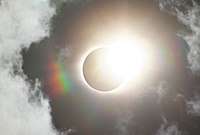 A solar eclipse passed over Cullowhee on August 21, 2017.[16] This is an image as viewed from the campus of WCU.
A solar eclipse passed over Cullowhee on August 21, 2017.[16] This is an image as viewed from the campus of WCU.
Notable people
- Nick Searcy, actor
References
- "U.S. Census website". United States Census Bureau. Retrieved 2008-01-31.
- "US Board on Geographic Names". United States Geological Survey. 2007-10-25. Retrieved 2008-01-31.
- "Talk Like a Tarheel" Archived 2013-06-22 at the Wayback Machine, from the North Carolina Collection website at the University of North Carolina at Chapel Hill. Retrieved 2013-01-29.
- "Geographic Identifiers: 2010 Census Summary File 1 (G001): Cullowhee CDP, North Carolina". American Factfinder. U.S. Census Bureau. Archived from the original on February 13, 2020. Retrieved October 9, 2018.
- "Cherokee instructor discusses possible evolution of word 'Cullowhee'", Western Carolina University
- "US Gazetteer files: 2010, 2000, and 1990". United States Census Bureau. 2011-02-12. Retrieved 2011-04-23.
- UNC Asheville Hosts Talk on "Excavations at Cullowhee Mound" Archived 2012-05-19 at the Wayback Machine, UNC Asheville
- The History of Jackson County Sesquicentennial Edition
- "National Register Information System". National Register of Historic Places. National Park Service. July 9, 2010.
- "National Register of Historic Places Listings". Weekly List of Actions Taken on Properties: 4/01/13 through 4/05/13. National Park Service. 2013-04-12.
- Brown, Elizabeth Anne (March 23, 2019). "Thriving, not just surviving: Cullowhee named a top US 'micropolis'". Asheville Citizen-Times. Retrieved March 25, 2019.
- List of colleges and universities in North Carolina
- https://www.wcu.edu/discover/about/fast-facts.aspx
- Smoky Mountain High School
- "CuRvE News | CuRvE". Gocullowhee.org. Retrieved 2012-04-28.
- Reinhart, Vince (August 21, 2017). "Eclipse - Cullowhee North Carolina" – via Flickr.
External links
- Community website
- CuRvE, Cullowhee Revitalization Endeavor
- Cullowhee entry at City-Data.com